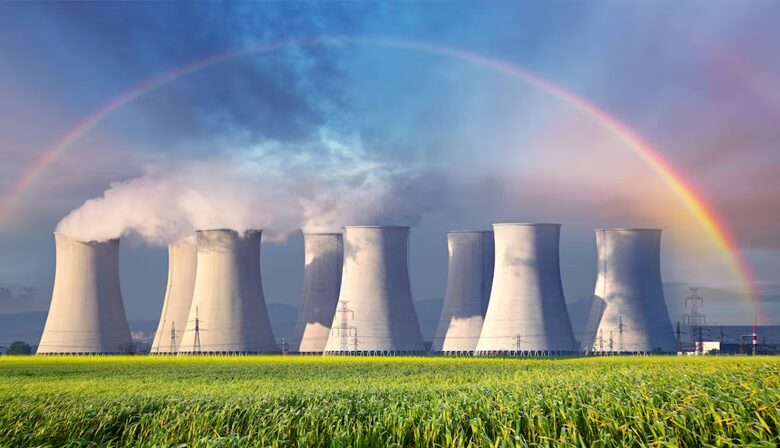Nuclear energy – A boon or a bane ?
News Mania Desk / Piyal Chatterjee / 8th January 2025

Anyone who isn’t up to date on IT sector news could be forgiven for missing the recent surge in nuclear power investments, as practically every major tech company has jumped at the chance to power data centers with nuclear energy.
Microsoft signed a 20-year power agreement with Pennsylvania’s controversial Three Mile Plant, which is due to restart in 2028. Meta recently issued a request for ideas for nuclear power generation after canceling plans for another following the finding of a rare bee species on the designated site. Amazon has signed at least three nuclear power deals, while Google has collaborated with Kairos Power to acquire nuclear energy from a network of small modular reactors (SMRs).
Sam Altman, the CEO of OpenAI, holds the position of chairman at Oklo, a startup focused on nuclear “microreactors” that has recently received approval for site investigations in Idaho for a fast-fission nuclear facility. Peter Thiel’s Founders Fund has backed a startup aiming to develop a new production technique for producing a potent nuclear fuel commonly utilized in sophisticated reactors.
This might appear unexpected, until one observes the projected energy consumption for these firms’ data centers and the looming PR crisis that could arise if they fail to secure renewable energy options promptly.
The energy requirements of data centers in large tech firms already surpass those of several small nations, and as per the International Energy Agency (IEA), the electricity demands of data centers, AI, and crypto mining could potentially double by 2026. Keep in mind that numerous companies have committed to achieving carbon neutrality in the coming decade or two, which poses a certain issue.
Nuclear energy is the way to go
These investments can be perceived in several ways. Investments from large tech companies in nuclear energy could potentially enhance the feasibility of nuclear power for the broader community.
Nuclear energy competes with wind and solar power generation regarding greenhouse gas emissions. Additionally, it does not have the “intermittency” of those sources, addressing the difficulties of storing energy for future use when there is no sunlight or wind. Critics of renewable energy often exploit the issue of solar and wind intermittency in their arguments for maintaining dependence on fossil fuels such as natural gas.
Moreover, there are compelling reasons to set aside the widespread fears of meltdown—nuclear energy production today is safer than it has ever been, and is expected to become even safer with increased investments.
It is probable that heightened nuclear production will not only enhance safety but also reduce costs owing to industry learning curves, similar to what has happened in the solar sector in recent decades. One study contends that the cost of nuclear power today would be 10% of its current price if early production levels had persisted instead of declining due to regulatory constraints following high-profile disasters such as those at Three Mile, Chernobyl, and Fukushima.
Although the US produces more nuclear energy than any other nation — almost double that of China, the second-largest generator — numerous European nations currently derive a significantly larger percentage of their electricity from nuclear power than the US, suggesting considerable potential for expansion. There are numerous arguments to support the idea that this nuclear investment is simply greenwashing — a persuasive effort for solutions to an issue that tech companies themselves generated — an issue we never requested. Even if increased nuclear energy production is entirely beneficial, this benefit is limited to fueling data centers — at least in the short term.
Crucially, any initiatives to enhance nuclear energy should be paired with strategies to securely manage a growing stockpile of nuclear waste, which stays harmful for millennia. A significant part of nuclear energy’s appeal is its capability to produce electricity away from densely populated areas, yet some recent technological investments suggest establishing data centers right next to nuclear plants.
This might evoke for the tech-savvy reader the ambitions found in the cryptocurrency community to utilize wasted or “stranded” energy to meet their substantial electricity demands. Cryptocurrency mining — an activity necessary to maintain the existing value of Bitcoin and various other well-known cryptocurrencies — currently uses more energy than the state of Washington and the entirety of the Netherlands, which has a population of eighteen million.
Crypto supporters have started investigating distinctive ways to present the energy-heavy requirements of their sector. They contend that harnessing stranded energy for cryptocurrency mining instead of catering to conventional industries and consumers could potentially promote green energy development and provide societal advantages overall. The deeper one delves into the literature on “cryptocurrency mining and green energy,” the more they sense they’re being misled, quite aggressively. Cryptocurrency miners are primarily motivated to convert energy into profit, and it’s difficult to overlook the effort to portray this energy consumption as a beneficial externality for society as a blatant effort at greenwashing a practice with dubious worth.
Thus, we need to inquire, as both cryptocurrency and AI create a need for these significant increases in energy: who benefits? Nuclear power and the use of “stranded” fossil fuels are addressing someone’s issue. But whose is it?






